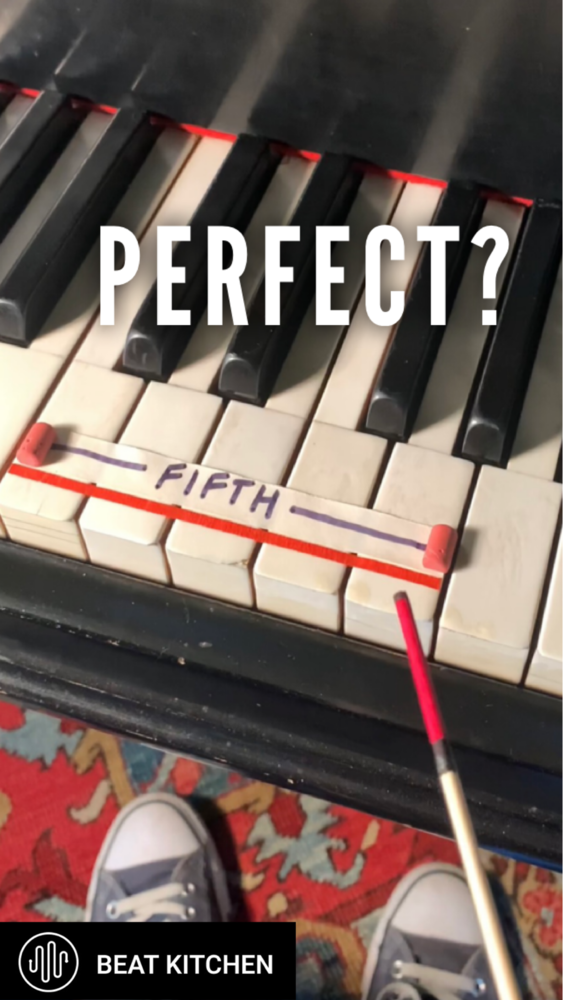If this is a fifth, what’s so perfect about it anyway? We can define a fifth as the distance between the first and the fifth degree of a scale. That distance can also be described as seven semitones.
On a piano, this measures out to be about this distance. In enough places, it can be a little deceptive. -oh, like here.
This is not a perfect fifth. Count it. Not as many black keys here, so it’s only six semitones.
And if you’ve heard people talk about a perfect fifth, that’s not an imperfect fifth. Totally different animal. The distance between B and F can also be called a tritone, or a flat five, or a sharp four.
You could even call it the devil’s interval. It’s true. We say perfect because that note occurs as a natural part of the harmonic series.
To create a system of tuning that allows you to play in all keys, we have to make some really complex compromises. The term is equal temperament, and I’m not going to get into it right here. An imperfect fifth is a fifth that forgoes those compromises.
It has to do with the way you tune a piano, and it’s sometimes called a wolf tone because it’s pretty dissonant. You don’t really hear it in traditional music. For more on music theory, music production, follow “Beat Kitchen” and like this post.
And if someone who belongs in a “Beat Kitchen” class, share it.

